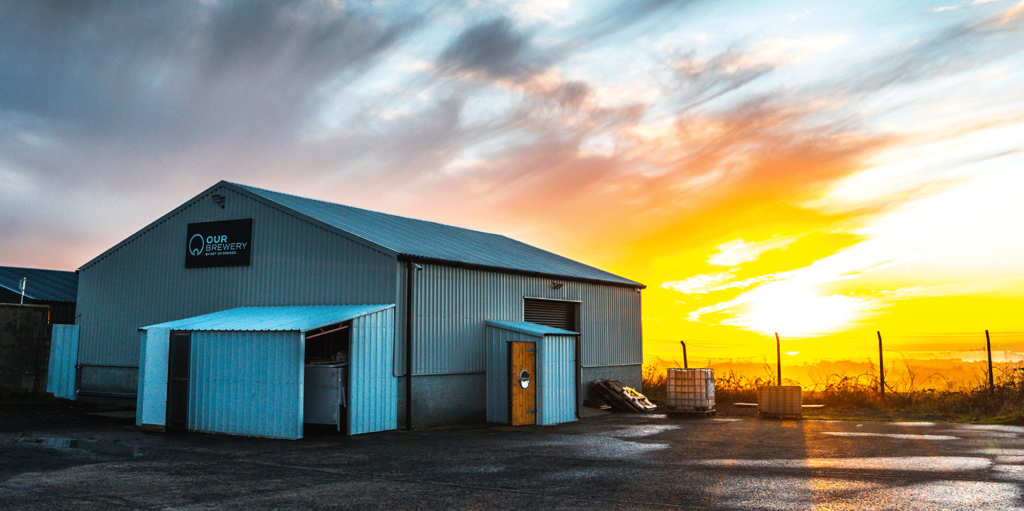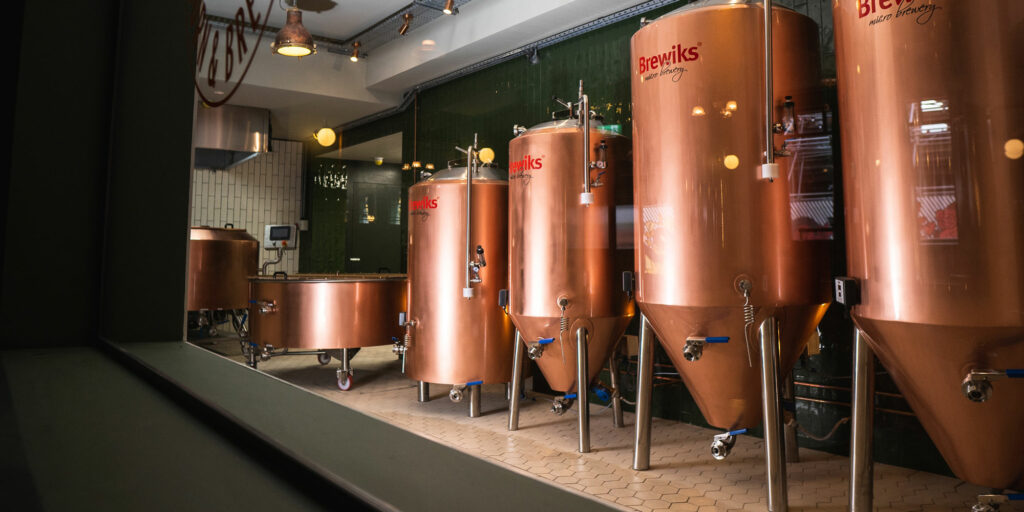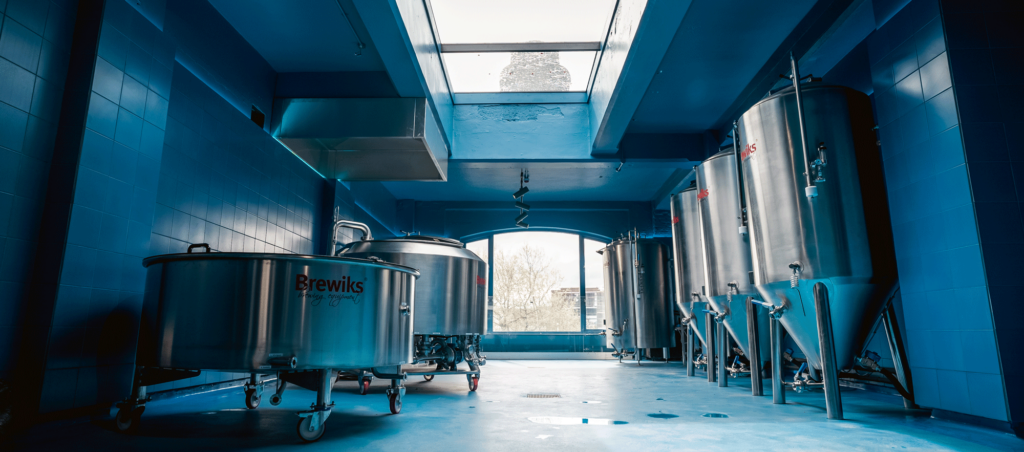
New Reflections on the Northern Irish Brewing Scene
In February 2016 I visited Belfast for the first time. Boundary Brewing Cooperative was celebrating a year since it had begun brewing within the Portview Trading Centre, just off the somewhat infamous, mural stricken Newtownards Road, on the city’s east side. I had been invited to join in the celebrations, and experience the emergence of craft brewing in Northern Ireland for myself.
Around the same time the emergence of modern, fresh-thinking breweries was happening at a frightening pace on the UK mainland. New names like Cloudwater, Verdant and Deya were tearing up the rulebook in terms of how beer could look and taste, while breweries such as London’s The Kernel, and Beavertown (pre-Heineken shenanigans) were slowly becoming household names. Living in London at the time, I was excited to see what I’d find on the other side of the Irish Sea.
But the bar is not set at a fair height here. Beer licensing laws are very different in Northern Ireland compared to the rest of the UK—in fact new licences permitting the sale of alcohol cannot be applied for, existing ones must be bought. As such the majority of taps, and retail shelf space have been largely seized by major operators such as Diageo, Tennents and Heineken. These conditions make it much harder for a small brewery to survive, let alone flourish.
There’s also a slightly different attitude towards pub culture here. Perhaps somewhat dictated by the kind of, or lack of different brands on offer, drinkers tend to stick to a certain brand. There’s distinctly less of a willingness to spend hard earned cash on something new and different over here. I freely admit this observation is anecdotal, rather than from someone with their boots on the ground, but there’s a real sense that entering the beer market in Northern Ireland as a small producer, with a product quite different to what most people know and trust, is a huge risk.
Boundary, along with other emergent businesses such as Lacada in Portrush, and Farmageddon, also in Belfast, were among the first to attempt to introduce homegrown craft beer to Northern Ireland. In a piece I wrote for Good Beer Hunting shortly after that visit, titled “Fresh, Green Shoots” I expressed—perhaps a little naively—a distinct sense of excitement and optimism. Good things were happening in the Northern Irish beer scene.
These feelings were compounded in subsequent years when I was invited over again to visit the ABV beer festival, where I hosted a few talks, and got to spend a good amount of time with my future Pellicle co-founder Jonny Hamilton, a Portrush boy himself. ABV captured the excitement I had felt on the initial visit, and was channelling it into the development of what I would definitely call a “scene”. It was as good a time as some of the very best modern beer festivals, including IndyManBeerCon in Manchester, and the London Craft Beer Festival. Sadly, the event wasn’t able to kick on, and hosted its last event at the Carlisle Memorial Church in September 2018.
What the festival had showcased was that there is very much the desire for good craft beer in Northern Ireland, and that the emergence of local producers would form the heart of it. This is the reason why I decided to include a small selection of Northern Irish breweries in my book Modern British Beer (look, Modern United Kingdom Beer didn’t have the same ring to it, ok.) Exciting stuff was happening within the NI scene that, other than a smattering of beer from some of the aforementioned breweries, wasn’t seeing much traction in England, or elsewhere, at all, and this frustrated me.

It was a relief, then, when I finally got to visit Northern Ireland for the first time since the last ABV festival last month, and spend some quality time touring breweries with Johnny and the crew from Get’ErBrewed. I was most certainly out of the loop seeing as my last visit was almost four years ago, but not for long… Within minutes of my arrival I was handed a beer—a deliciously crisp and juicy pale ale—from Our Brewery, a sister company to Get’ErBrewed, based not far outside Antrim to the west of Belfast itself.
The rest of the trip was a beer infused whirlwind, with barely a moment to catch my breath. No sooner had I emptied my glass of Our Brewery pale ale than I was poured samples from three large ex-wine foeders, with a steadily maturing Flemish Red and even a spontaneously fermented beer showing real promise, even in these early stages. Then it was back in the car and over to the nearby Heaney Brewery, who’s owner Mal McCay I had first met when he was apprenticing at Boundary, back in 2016.
A quick glass of their (quite honestly, fantastic) pale here, and we said our goodbyes to Mal and brewer Ayden (who has recently written a thought-provoking piece on the connections between musicians and brewing for Pellicle) and we were away to Belfast for a few more scoops. Our first stop was Out of Office, a brand new brewery based atop the idiosyncratic Ulster Sports Club—a building usually more associated with live music and dance parties than it is craft beer.
Despite them still putting the finishing touches to the tasting room, the beer showed remarkable finesse for such a young brewery. And while I enjoyed tasting its NEIPA and pear and vanilla sour, it was the lager that impressed me the most. To brew a beer of this style, where there’s nowhere to hide even the smallest mistake, of this quality out of the gate, marked Out of Office as not only a must-visit location when in Belfast, but a brewery to keep a very close eye on.
There was no time for dallying here either, as we were soon whisked around the corner to the beautiful Deer’s Head pub, home of Bell’s Brewery (no, not that one.) While the Deer’s Head has all the charm and aesthetics you’d expect from a well-maintained Irish boozer, it also offers a selection of beers brewed on the 5-barrel brewhouse, manufactured by Brewiks, which you can see from the snugs through some handily-placed windows.
That evening the pub was hosting the official launch of Our Brewery, gathering together a selection of beer industry folks, writers, and bloggers to celebrate. While I sensed the same trepidation stemming from the post-pandemic, cost of living crisis climate everyone throughout the industry (and indeed, anyone at all) is feeling at the moment, I also detected a sense of relief. Maybe it was because after a long day of brewery visits I had finally taken a pause, but I got the feeling that people were glad to see the development of the local beer scene back on track, despite the challenges it has to surmount to be sustainable.

There was time for a couple more visits before the next day, including to Bullhouse Brewery—and its impressive new bar, Bullhouse East—near Boundary on Newtownards Road. Here Johnny and I chatted for a new Get’ErBrewed video, while I enjoyed what was probably my favourite beer of the trip (a DDH pale called Rolling Papers, that was so thirst-quenchingly satisfying I just couldn’t put down). Then we drove up to Portrush so I could finally meet the folks from Lacada in person and—you’ve guessed it—enjoy some more fantastic beer.
Perhaps the most notable thing that struck me about all the beers I enjoyed on that trip was their quality and consistency. The reality is that, other than a handful of outliers, Northern Irish beer isn’t presently having much of an impact outside of its very small home market. This is a shame, because there’s a lot of hugely interesting beer that people are yet to discover. There’s a number of factors in play, from the aforementioned licensing issues, to the immense amount of competition an NI-based brewery has to face if it decides to distribute its beer in England, or elsewhere. Then there is the lack of confidence from some licensees, unwilling to take a punt on something a little different. But I feel that might be slowly, but surely, starting to change.
Overall, the biggest sense I got from the trip was optimism; that there’s still a desire, an urgency even, for high-quality, varied craft beer from a range of independents. It’s clear that in its home market there are still plenty of people to convince this is the case, but this kind of thing happens every day, one glass of beer at a time. Maybe I am still a tad naive about the realities for craft beer in Northern Ireland—or indeed anywhere—but if any scene is going to take root and show the rest of the world it means business, it has to start with belief.
—Matthew Curtis